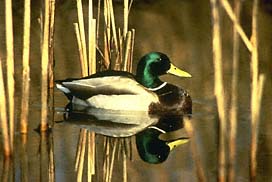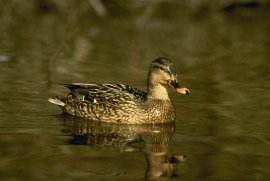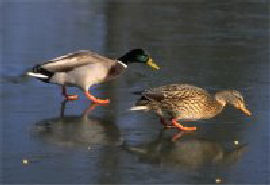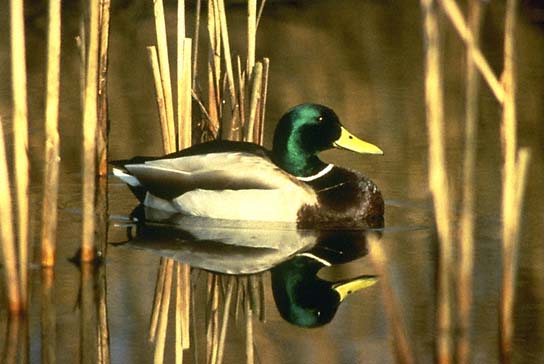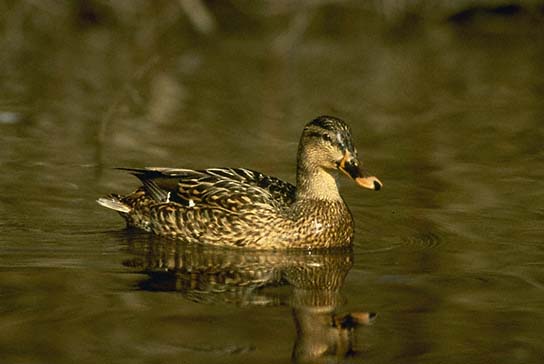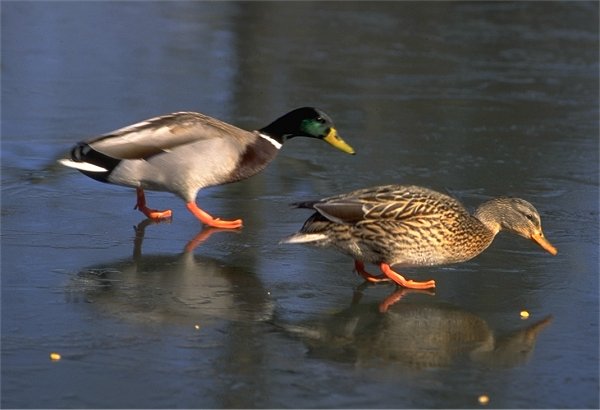Duck-like Birds
Description
18-27" (46-69 cm). Male has a green head, white neck ring, chestnut breast, and grayish body; inner feathers of wing (speculum) are metallic purplish blue, bordered in front and back with white. Female mottled brown with white tail and purplish-blue speculum; mottled orange and brown bill. Form in Southwest ("Mexican Duck") similar to typical female Mallard but darker; speculum blue; bill of male yellow-green; bill of female dusky orange; no white in tail.
Nesting
8-10 light olive-green eggs in a down-lined nest often placed some distance from water, occasionally even in a tree.
Discussion
The Mallard is undoubtedly the most abundant duck in the world. Nearly 10 million live in North America, and millions more are found in Eurasia. Since the Mallard is the ancestor of the common white domestic duck, still more can be added to the total. Mallards frequently interbreed with domestic stock, producing a bewildering variety of patterns and colors. They also hybridize with wild species such as the closely related American Black Duck and even occasionally with Northern Pintails. Strong fliers, Mallards sometimes reach remote oceanic islands where isolated populations have evolved into new species. Like the Mottled Duck, these isolated populations often differ from the Mallard mainly in that they lack the colorful plumage of the male. Mallard courtship starts in the fall, and by midwinter pairs have formed. Mated pairs migrate northward together, heading for the female's place of origin. The male stays with the female until incubation is well underway, then leaves to join a flock of other males to begin the annual molt.

